Vintage Chipmunk Crash at Jandakot
On Wednesday, the ATSB released an urgent advisory asking all owners of the vintage aircraft DHC-1 Chipmunk to check their rivets. This advisory came as a part of the still in-progress investigation of a fatal crash at Jandakot Airport on the 26 of April 2024.
The DHC-1 Chipmunk is a two-seater single-engine aircraft introduced in 1946. This was de Havilland Canada’s first postwar aviation project, designed as a successor to the de Havilland Tiger Moth biplane trainer. The factory in Toronto produced 217 Chipmunks, with a further one thousand produced under licence by de Havilland in the UK (originally at Hatfield Aerodrome (which readers might remember from the unbelievable photograph taken in 1962) but manufacturing was later transferred to their factory at Hawarden Aerodrome). From 1955 to 1961, another sixty-six Chipmunks were manufactured under licence in Portugal by Oficinas Gerais de Material Aeronáutico for the Força Aérea Portuguesa. Six of the Chipmunks are still active in Esquadra 802 Águias in the Portuguese Air Force academy.
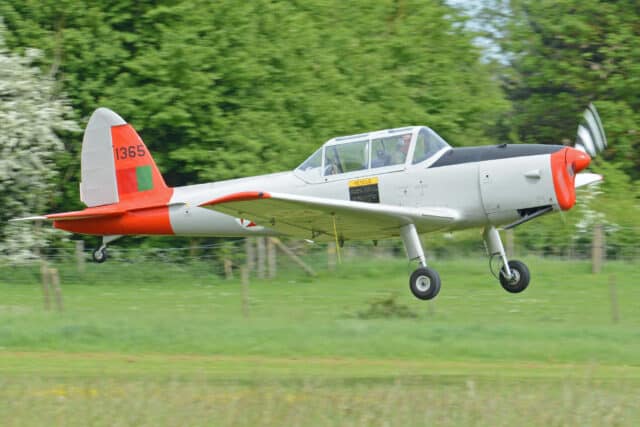
This particular aircraft was one of those manufactured in Portugal. The DHC-1 Chipmunk 1354 with the serial number OGMA 44 was built in 1958 as 1354 in the Portuguese Air Force. Designed as a Mk 10, the Mk 22 is the designation of those aircraft converted for civilian use. It was registered in the US in 1982 as a civilian aircraft (N64747), where at some point, the Portuguese-manufactured aircraft was repainted with Canadian markings.
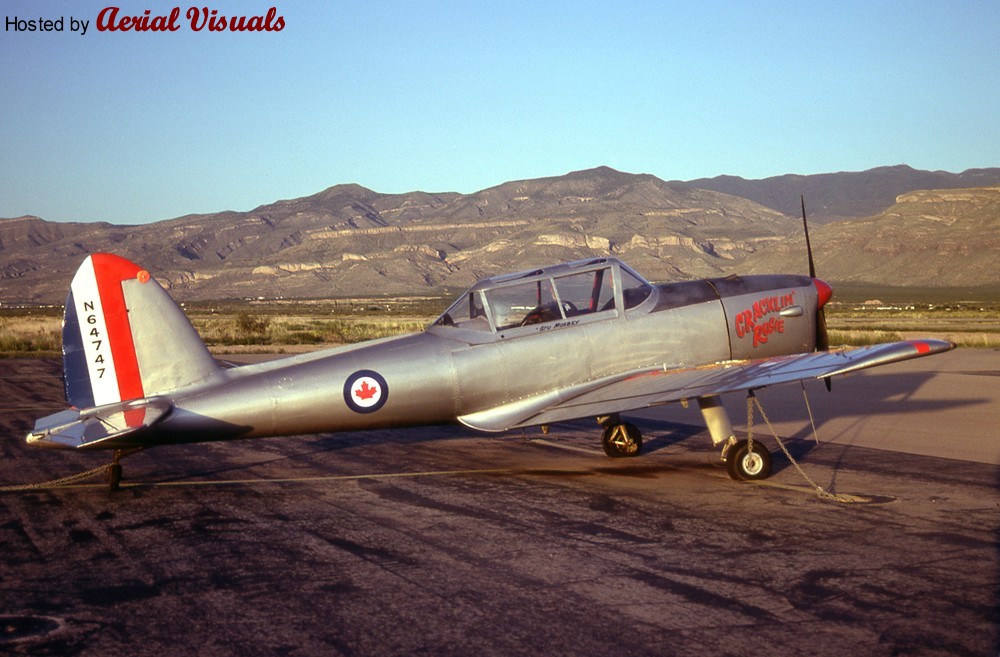
By 1996, the original Portuguese markings had been restored. The aircraft was exported to Australia as VH-POR in 2010. The pilot, who had received his private pilot licence in the UK in 1977, operated the aircraft and held the registration from 2018. The Chipmunk was still powered by the original engine, a 4-cylinder de Havilland Gipsy Major 10 MK 2 engine with a wooden Hoffmann propeller. It was based in Jandakot airport, a busy airport in Western Australia.
On Friday the 26th of April 2024, the pilot took the Chipmunk out for a pleasure flight from Jandakot Airport in Western Australia. A person on the southern apron took photographs of the Chipmunk as it taxied past. The Chipmunk continued to runway 24L where the pilot was given clearance to take off. Runway 06R/24L is 1,150 metres long (3,770 feet).
The aircraft started its take-off roll and lifted off about halfway down the runway. However, as it took off, another witness saw something “flapping” on the aircraft. As it flew over the far end of the runway, the aircraft entered a roll to the left while the pilot made a frantic radio call.
Papa Oscar Romeo, Papa Oscar Romeo, MAYDAY MAYDAY MAYDAY
The angle of bank increased and the Chipmunk descended, crashing to the ground. A CCTV camera recorded the seconds before the crash, in which the left-side engine cowling could be seen opening and closing. A flight instructor and student were landing as the aircraft descended and the instructor also clearly saw the engine cowling door open as the aircraft descended.
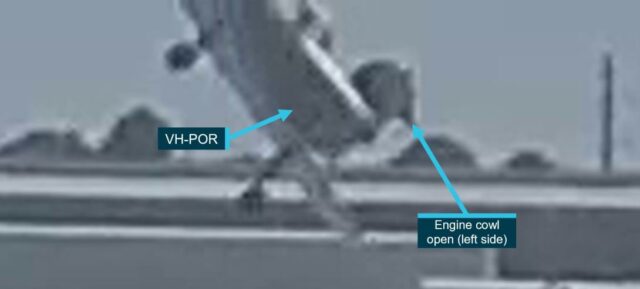
The Chipmunk crashed into sand paddocks with damage to the nose and left wing.
Emergency services responded immediately with multiple fire and police crews arriving on the scene. They pulled the pilot out of the aircraft where he received emergency treatment before being transported to the hospital; however, two days later he died of his injuries.
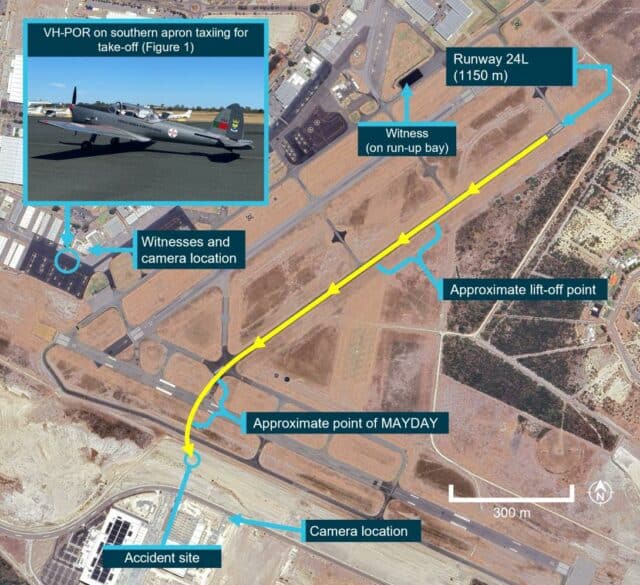
In the preliminary report released on the 4th of July, the ATSB found damage on the engine cowl latches that was indicative of the latches having been unfastened on the left side.
Examination of the photographs taken during the taxi showed that the two engine cowl latches were vertical. The cowling doors are latched on either side with the latches horizontal if they are correctly fastened. The engine cowling door on the left side was already unlatched during the taxi.
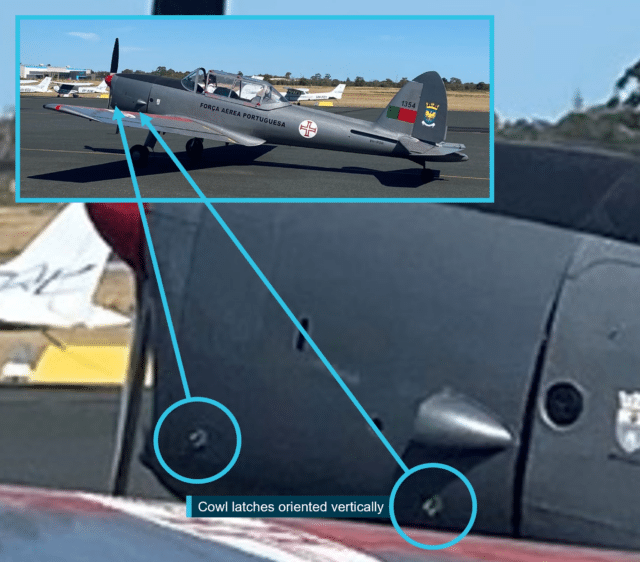
Now there has been a new update in the form of a safety advisory notice: DHC-1 Chipmunks may have incorrect rivets fitted.
This is not to do with the engine cowling but the shoulder harness in the cockpit. When the Chipmunk crashed, the harness, meant to restrain the upper torso of the pilot, was torn away. The ATSB discovered that all 12 rivets had sheared from both sides of the mountings.
New mountings were installed in 1966, replacing the original aluminium alloy gussets. However, in the accident aircraft, the ATSB found that the rivets were not the correct specification and that the non-conforming rivets had only one-third of the strength of the specified rivets. The result was that the mountings could not hold and the upper restraints failed.
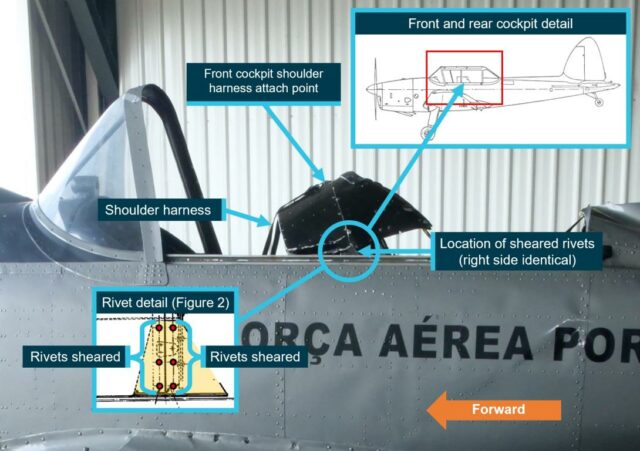
It isn’t yet clear if the rivets had been replaced since the mountings were installed in 1966; as these rivets might be present in other Chipmunks, an immediate advisory has been released.
AO-2024-013-SAN-01: The ATSB advises DHC‑1 Chipmunk maintainers and owners to be aware that fitment of incorrect specification rivets where the upper structure between the front and rear cockpits attaches to the gussets on either side could significantly compromise the crashworthiness of the aircraft.
The investigation is still in progress and will no doubt focus both on the descent and crash of the aircraft and the survivability of the crash if the rivets had held. However, I will note that the Chipmunk engine appears to have been functioning normally. Although the engine cowling was unlatched, this is unlikely to have affected the aircraft’s ability to continue to climb. The loss of control is more likely lack of experience. Although the pilot had held a valid license for forty-six years, he had only 330 total flight hours.








I’m surprised the pilot used the radio in this situation.
That was my first thought — why was he on the mike when he was barely off the ground? Even assuming he had a headset instead of a hand mike, the old rule Aviate-Navigate-Communicate should apply. But someone averaging <8 hours per year may not have spent enough time thinking about emergencies.
I suspect that talking on the radio caused that turn which drifted into a stall. His flying history will be interesting depending on what the ATSB consider “valid” — could there be a twenty year gap which would better explain the low hours? Or did he continue to get checked out every year (which would mean more testing in responding to emergencies than the average pilot, no?).
The Chipmunk is likely a write-off but I wonder if the pilot might have survived the crash if the harness had held.
I should have linked it in the area but here are some photos of the crash site: https://7news.com.au/news/emergency-response-launched-after-pilot-crash-lands-at-jandakot-airport-in-perth-c-14453256